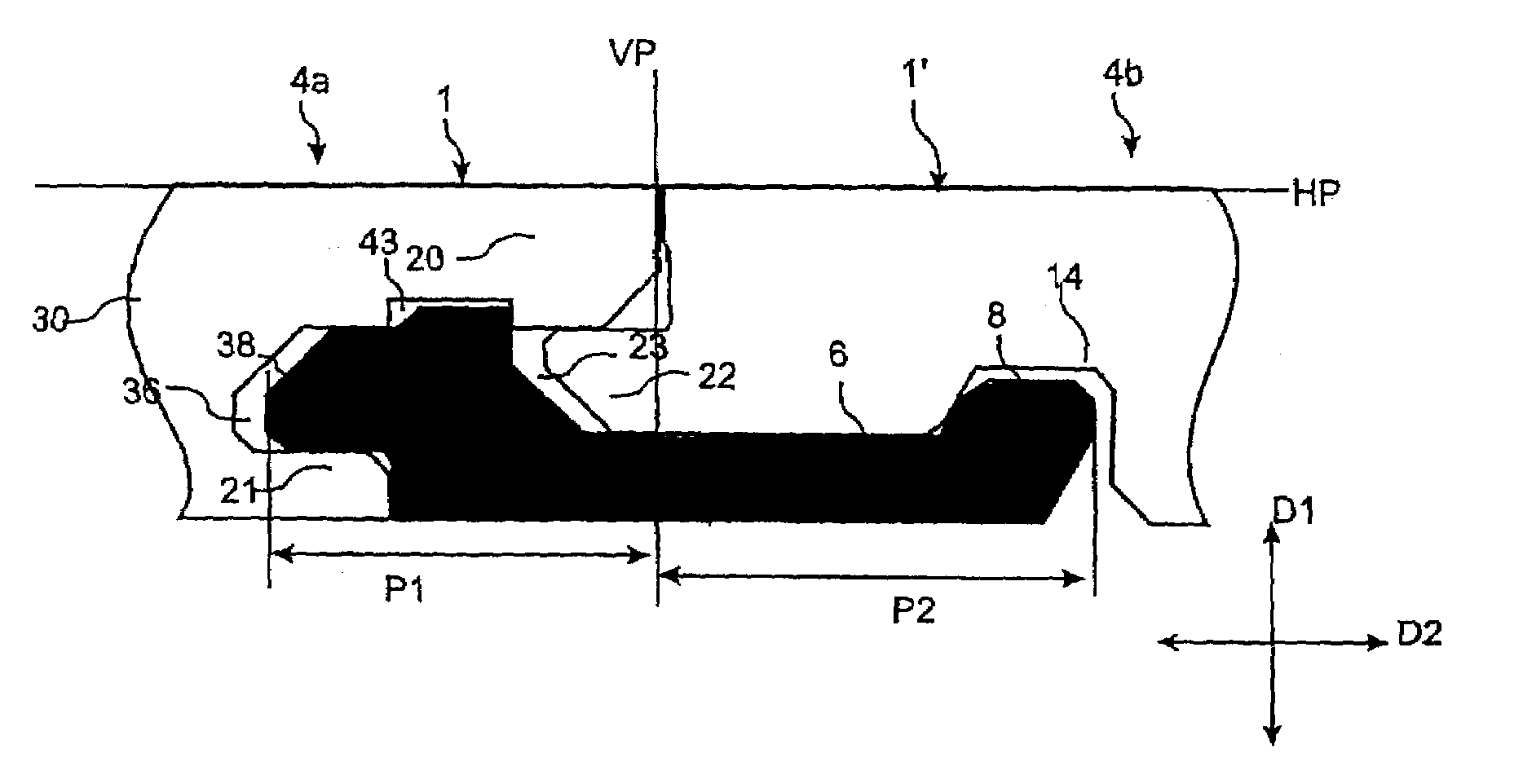Mechanical locking system for floating floor
a technology of mechanical locking and floating floor, which is applied in the field of floorboards, can solve the problems of incomplete floor panels, considerable waste of materials, and relatively expensive techniques used to manufacture such floorboards with mechanical locking systems, and achieve the effect of rationality and cost-effectiveness
- Summary
- Abstract
- Description
- Claims
- Application Information
AI Technical Summary
Benefits of technology
Problems solved by technology
Method used
Image
Examples
Embodiment Construction
[0097]A first preferred embodiment of a floorboard 1, 1′ provided with a mechanical locking system according to the invention will now be described with reference to the embodiments shown in FIGS. 9a–d. To facilitate understanding, the locking system is shown schematically. It should be emphasized that an improved function can be achieved using other preferred embodiments that will be described below.
[0098]FIG. 9a illustrates schematically a cross-section through a joint between a long side edge portion 4a of a board 1 and an opposite long side edge portion 4b of a second board 1′.
[0099]The upper sides of the boards are essentially positioned in a common horizontal plane HP, and the upper parts of the joint edge portions 4a, 4b abut against each other in a vertical plane VP. The mechanical locking system provides locking of the boards relative to each other in the vertical direction D1 as well as the horizontal direction D2.
[0100]To provide joining of the two joint edge portions in ...
PUM
 Login to View More
Login to View More Abstract
Description
Claims
Application Information
 Login to View More
Login to View More - R&D
- Intellectual Property
- Life Sciences
- Materials
- Tech Scout
- Unparalleled Data Quality
- Higher Quality Content
- 60% Fewer Hallucinations
Browse by: Latest US Patents, China's latest patents, Technical Efficacy Thesaurus, Application Domain, Technology Topic, Popular Technical Reports.
© 2025 PatSnap. All rights reserved.Legal|Privacy policy|Modern Slavery Act Transparency Statement|Sitemap|About US| Contact US: help@patsnap.com



